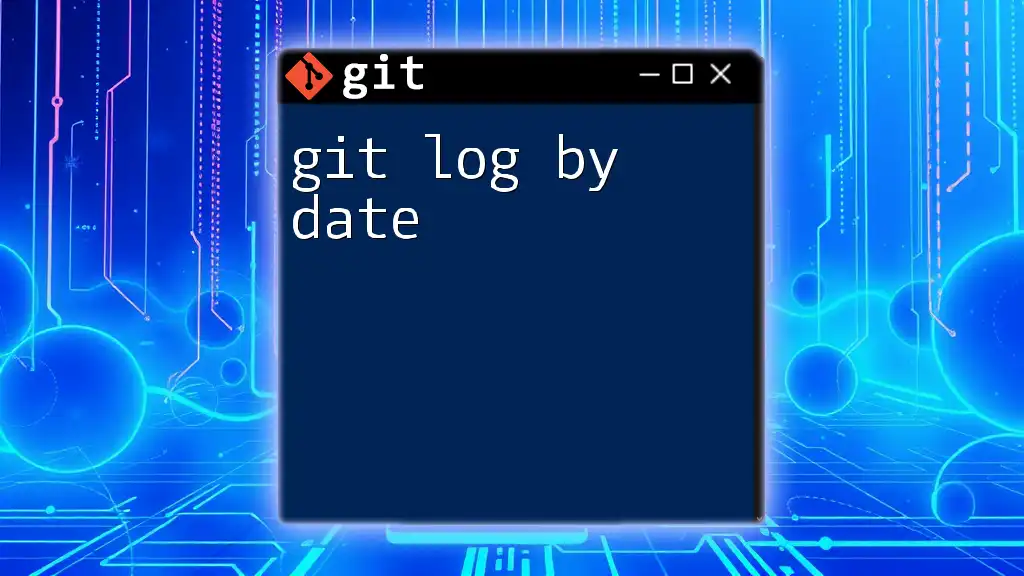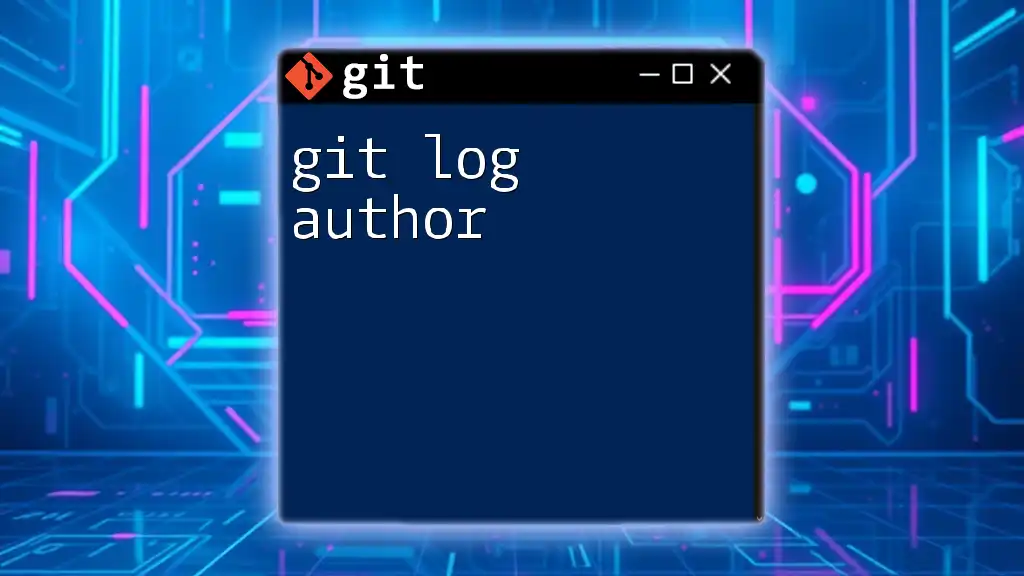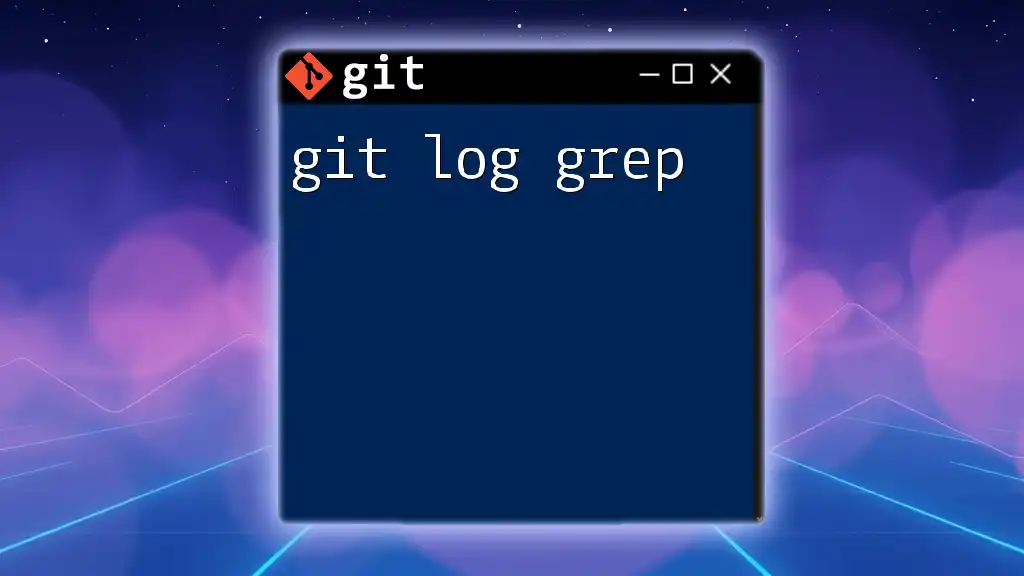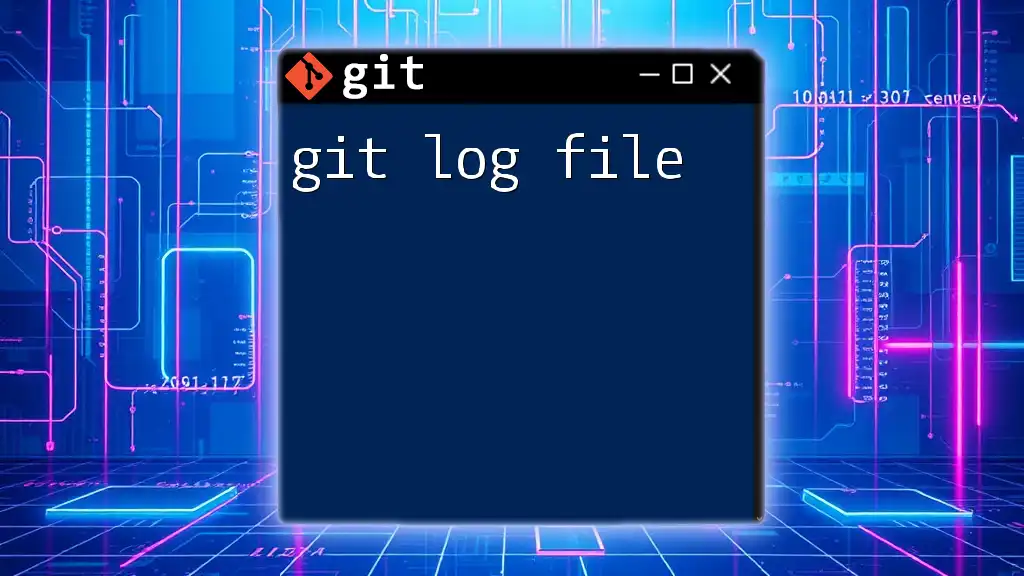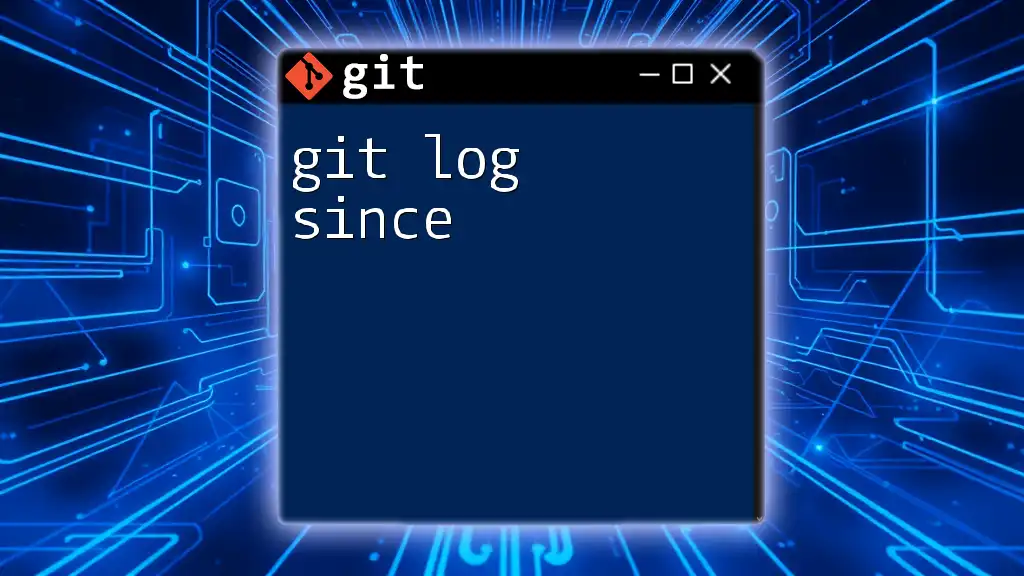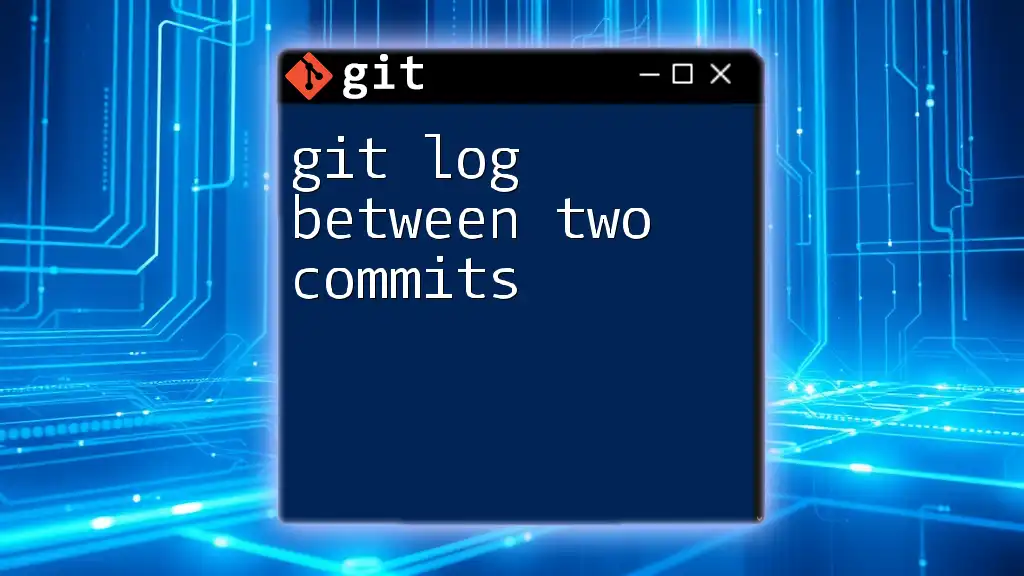The `git log` command allows you to view the commit history in your Git repository, and you can filter the logs by specifying a date range using the `--since` and `--until` options.
git log --since="2023-10-01" --until="2023-10-31"
Understanding Git Log
What is Git Log?
`git log` is a fundamental command in Git that allows users to view the commit history for a repository. By executing this command, developers can see a chronological list of all the changes made to the codebase, along with pertinent details such as author names, commit messages, and timestamps. This functionality is crucial for tracking project evolution, facilitating collaboration, and maintaining a clear record of contributions.
Importance of Viewing Commits by Date
Filtering commit history by date enhances the way developers interact with their projects. By examining logs within specific timeframes, team members can identify:
- Recent changes that may impact ongoing development or lead to debugging efforts.
- Patterns in commit frequency that can inform project planning.
- Milestones or significant developments corresponding to releases or feature additions.
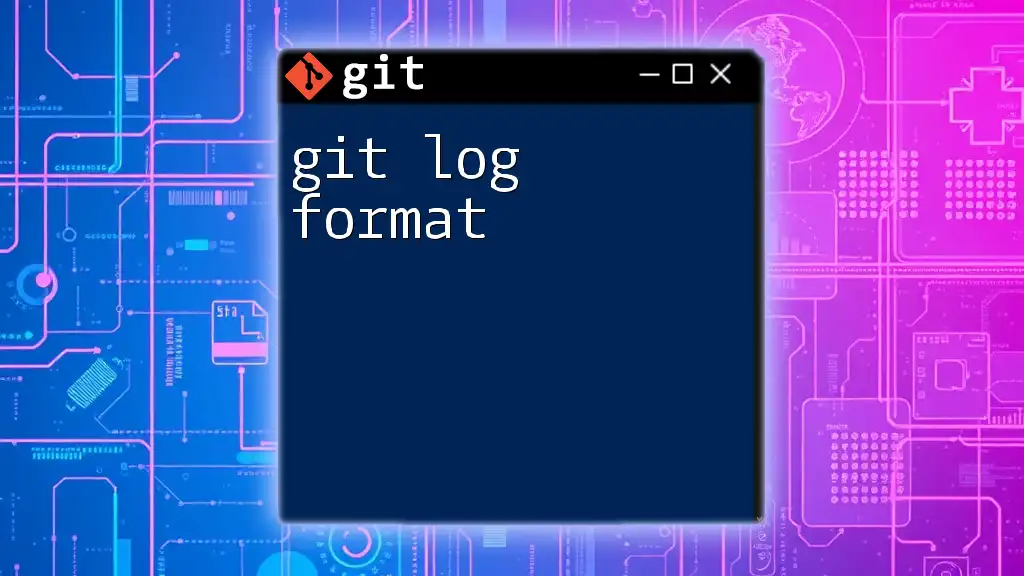
Basic Usage of Git Log
Syntax of Git Log Command
The basic structure of the `git log` command is straightforward. You can simply run:
git log
This command will display a detailed history of all commits in the current branch. Each entry will typically include the commit hash, author, date, and message.
Displaying the Git Log
Running the command as mentioned above will prompt an output that showcases all commits. Note that the output can be extensive, depending on the project's history. Each commit will be formatted with the following details:
- Commit hash: A unique identifier for the commit.
- Author: The person who made the changes.
- Date: When the commit was made.
- Commit message: A brief description of the changes.
This structure allows users to understand the progression of their project quickly.
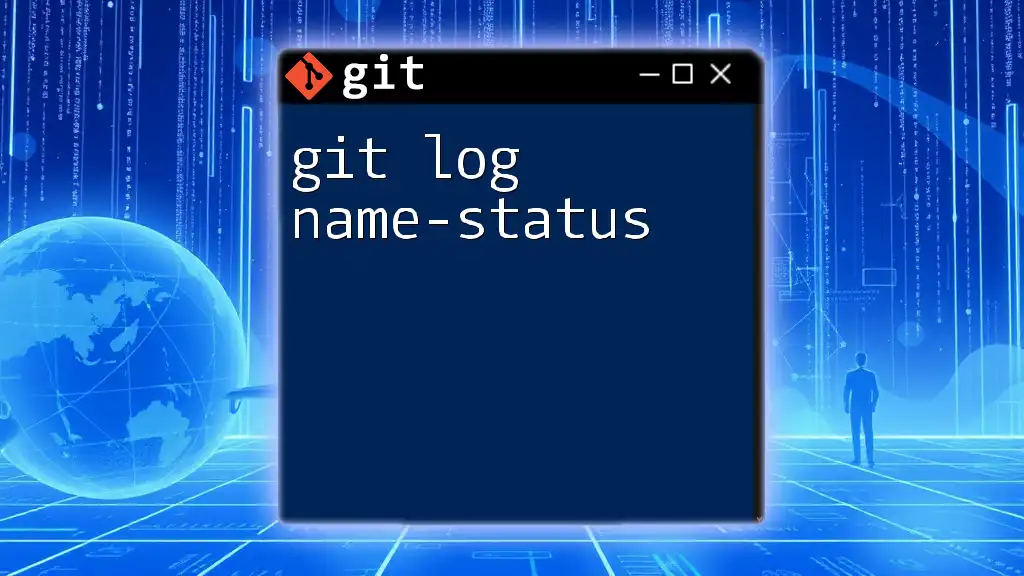
Filtering Git Log by Date
Date Options Overview
Git allows users to filter logs based on specific dates using a variety of formats. Users can input dates in the following forms:
- YYYY-MM-DD (e.g., `2023-01-01`)
- relative time descriptions (e.g., `2 weeks ago`, `last Friday`)
Understanding these formats can empower you to effectively retrieve the information you need.
Using `--since` and `--until` Flags
Filtering Commits with `--since`
The `--since` option lets you filter commits to show only those made after a specific date. For instance:
git log --since="2023-01-01"
In this example, the output will display all commits made after January 1, 2023. This command is particularly useful for isolating contributions made during the project’s active phases or focusing on specified development sprints.
Filtering Commits with `--until`
Conversely, the `--until` option allows for filtering commits before a specific date. For example:
git log --until="2023-01-31"
Using this command retrieves all commits made up to January 31, 2023. This feature can help in reviewing progress prior to a key date, such as a release or presentation.
Combining `--since` and `--until`
To filter commits within a specific date range, you can combine both flags. For example:
git log --since="2023-01-01" --until="2023-01-31"
This command will display all commits made between January 1 and January 31, 2023. This filter is invaluable for retrospective analyses during project reviews or when you need to compile changes for documentation.
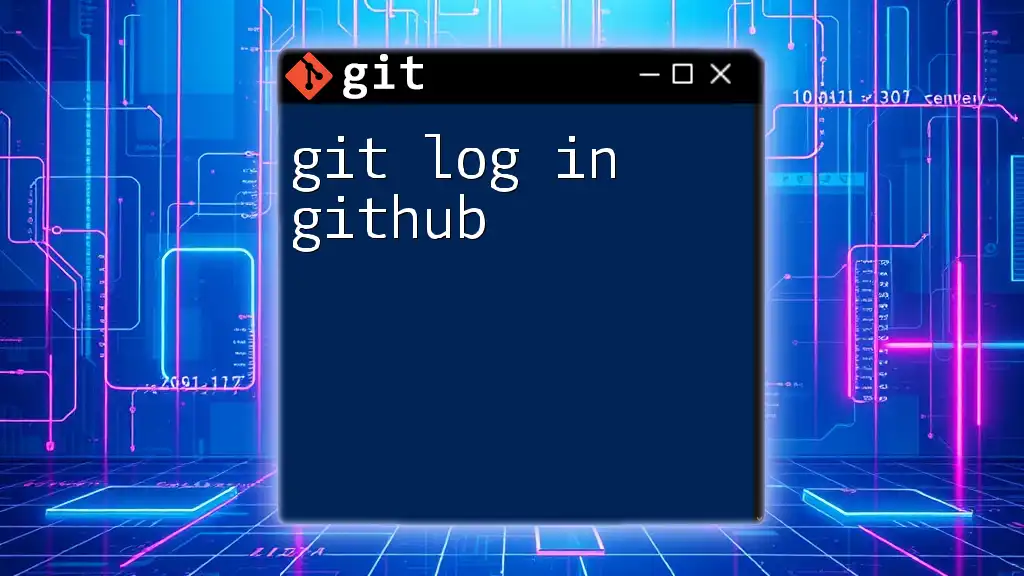
Formatting Git Log Output
Customizing Log Output with `--pretty`
The output of `git log` can be customized using the `--pretty` option, allowing developers to format the information in a way that best suits their needs. For instance:
git log --since="2023-01-01" --pretty=format:"%h - %an, %ar : %s"
In this command:
- `%h` shows the abbreviated commit hash.
- `%an` displays the author’s name.
- `%ar` shows the time since the commit was made in a human-readable format.
- `%s` outputs the commit message.
This level of formatting can streamline communication among team members by giving them exactly the information they need at a glance.
Showing Commit Details
To gain additional insight into the changes made during each commit, you can use the `--stat` option. This shows a summary of the file changes for each commit. For instance:
git log --since="2023-01-01" --stat
This command not only filters the commit log by date but also verifies which files were altered and the extent of changes made, enhancing the review process.

Practical Examples of Using Date in Git Log
Case Study: View Last Week’s Commits
To view all commits made over the past week, a common command is:
git log --since="1 week ago"
This command is particularly useful in fast-paced development environments where understanding recent changes is critical for ongoing tasks and bug fixing.
Case Study: Review of a Specific Date
To isolate commits made on a specific day, you can use:
git log --since="2023-09-15" --until="2023-09-15"
This will help in pinpointing any changes made during important project milestones or meetings.

Additional Tips for Using Git Log
Helpful Flags to Enhance Git Log Output
Apart from date-based filtering, other flags can be beneficial when using `git log`. For example, to filter logs by the author, you can add the `--author` flag:
git log --since="2023-01-01" --author="John Doe"
This command can help attribute changes directly to the responsible team member, facilitating better accountability and collaboration.
Saving Git Log Output to a File
If you want to keep a permanent record, you can redirect your log output to a file using:
git log --since="2023-01-01" > git_log.txt
This action is helpful for documenting changes, sharing progress with stakeholders, or generating reports.
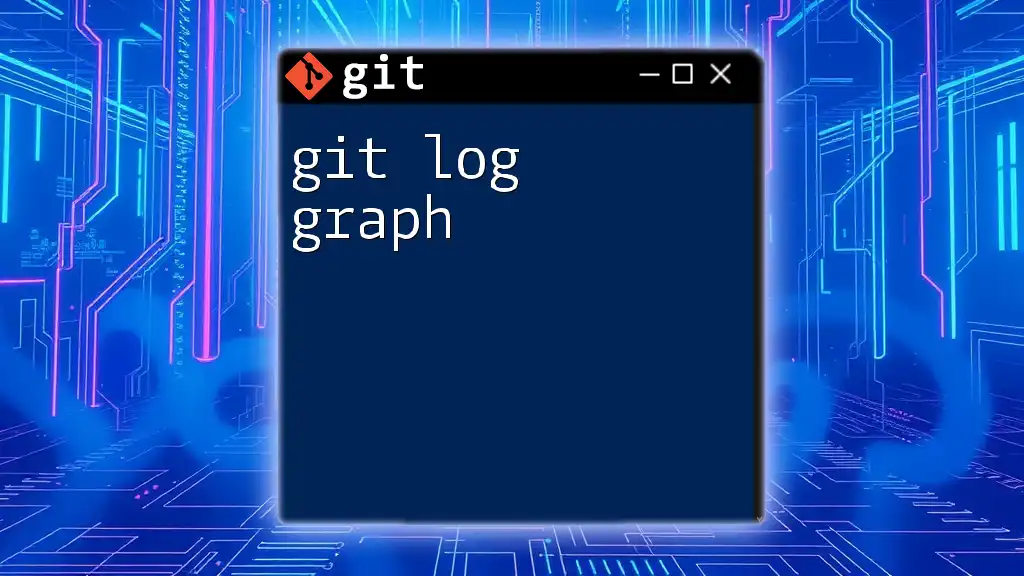
Conclusion
Utilizing `git log by date` is a powerful way for developers to track and audit their project history effectively. By mastering techniques such as filtering by `--since` and `--until`, formatting outputs, and employing helpful flags, you can enhance your workflow, improve team coordination, and maintain comprehensive documentation of your project's evolution. Regular practice of these commands will lead to increased proficiency with Git, making version control an effortless aspect of your development process.
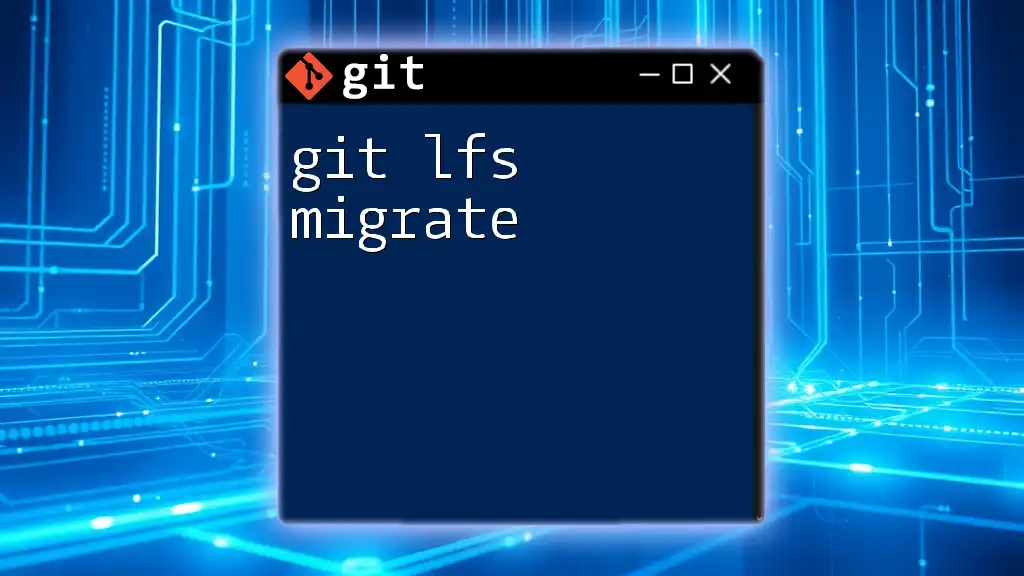
Additional Resources
For further learning, consider exploring the official Git documentation, reading about advanced Git commands, and turning to online content that focuses on enhancing your Git skills.

